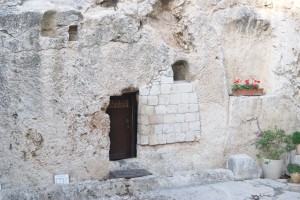Here are selected short articles from our website, designed to enhance your study of Christ’s Atonement.
“The Question of Authority and Jesus’s Parable of the Two Sons in Matthew 21,” John W. Welch
As Jesus entered the Temple the morning after his triumphal entry into Jerusalem, the chief priests questioned his authority. Jesus answered with a parable about a father and two sons. But these are no ordinary father, no ordinary vineyard, nor any ordinary pair of sons.
“Seven Versions of Jesus’ Prophecy on the Mount of Olives,” by S. Kent Brown
This prophecy is a crucial part of Jesus’ final ministry. This part of the Gospels includes the story of the poor widow’s two mites placed interestly before the sermon about the fate of Jerusalem.
“A Warning to the Jews (Matt. 23),” Richard D. Draper
Two days after Jesus’ triumphal entry into Jerusalem, he revealed information that was startling and frightening to his disciples.
“Farewell Discourses and the High Priestly Prayer,” Eric D. Huntsman
The Gospel of John enriches our understanding of the events and teaching of Jesus’ last night with passages that include Jesus’ last discourses and his beautiful Intercessory Prayer (John 13:31-17:26)
“Jesus Is Anointed (Mark 14:1-11),” Julie M. Smith, from The Gospel According to Mark. The anointing story is the narrative bridge between Jesus’ life and death; it is both the last story relating events from the daily life and the first part of the story of his death. Its location in the text mirrors its theological function since the anointing story explores the link between Jesus’ life and death.
“John’s Account of the Last Supper: The Lamb of God: Unique Aspects of the Passion Narrative in John,” Eric D. Huntsman
John’s account of the Last Supper contains unique elements recorded nowhere else.
“Why Should the Cross be Meaningful to Latter-day Saints?”Gaye Strathearn
The events on the cross are in integral part of the Atonement. The cross, as the place of being “lifted up,” is a symbol of God’s great love for his children. We are asked to take up our cross as disciples of Christ. Jesus kept the signs of the crucifixion on his resurrected body.
“The Trial and Death of Jesus,” John W. Welch
Why was Jesus killed? Who was responsible? Looking at the legal circumstances, it is clear that Jesus was in full control from beginning to end.
“The Legal Cause of Action against Jesus in John 18:29-30,” John W. Welch
The accusation in John 18:29-30 holds a key for understanding the legal cause of action and strategy of the chief priests in the proceedings against Jesus.
“Raising Lazarus: Jesus Signing of His Own Death Warrant,” John W. Welch
Without seeing the raising of Lazarus as a background, it is hard to imagine a reason why a large multitude of people would have followed Jesus into Jerusalem shouting, “Hosanna! Save us now!” and why the chief priests turned the crowds away and were able to execute him so quickly.
“Preparing for Easter,” Eric D. Huntsman
This blog includes scripture readings, commentary, artwork, and music for personal study of Holy Week and Easter.


